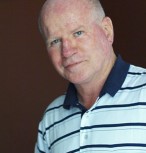DNA reveals the past and future of coral reefs
New DNA techniques are being used to understand how coral reacted to the end of the last ice age in order to better predict how they will cope with current changes to the climate. James Cook Univer

From 2005 to 2022, the main node of the ARC Centre of Excellence for Coral Reef Studies was headquartered at James Cook University in Townsville, Queensland (Australia)








Abstract: The world is filling up with priority conservation areas. Using different methods, and at different extents and resolutions, people have identified countless places that warrant special attention for nature conservation. Systematic conservation planning turned 30 in 2013 and has played a large role in marking up the world map. A wide variety of more or less similar approaches have also identified conservation priorities. These include biodiversity hotspots, tropical wilderness areas, important bird areas, global 200 ecoregions, and centres of plant diversity. Among the foremost approaches globally is now the identification of key biodiversity areas. Some of these approaches have been very influential in directing investments in conservation. With all this work done or underway, a basic question remains unanswered: where is the evidence base to support any of these approaches as guides to investing substantial but finite resources in conservation? More specifically: why and under what circumstances is one approach more effective than others, and how might any one approach be refined to improve its effectiveness? These questions lead to another one: how would we judge the relative effectiveness of approaches to identifying priority conservation areas? The science to answer these questions is weak, and the policy foundation even weaker. In this context, conservation lags well behind medicine and other areas with established approaches to measuring impact. The presentation will tackle three sets of issues and outline directions for conservation science to move toward an evidence base:
1. Two common ways of identifying conservation priorities
2. Cutting through the debate about proactive vs reactive conservation
3. Making decisions about spatially explicit actions, as opposed to generic conservation.
Biography: Professor Bob Pressey has worked on the theory, techniques and practice of conservation planning as a private environmental consultant, then as a research scientist with the New South Wales National Parks and Wildlife Service, and now at James Cook University. During his career, he has combined scientific research with policy development and collaboration with practitioners in Australia and internationally. His publications have had a high scientific impact. He is an ISI highly cited researcher in the field of Environment/Ecology with more than 4000 non-self citations of his papers and book chapters. His influence on practice includes close involvement with the systematic design of about 1 million hectares of reserves in New South Wales and collaborative projects that have influenced conservation decisions extensively in other countries. He has current projects in China, South Africa, Brazil, Papua New Guinea and Mexico, including two global biodiversity hotspots. His awards and prizes include the New South Wales Premier’s Public Sector Environment Award (2004), the Eureka Prize for Biodiversity Research (2002), and the major annual award from the Society for Conservation Biology (2001). An important feature of his new research program will be the close involvement of practitioners and other stakeholders representing local, regional, state and national agencies, non-government organisations and community groups.
New DNA techniques are being used to understand how coral reacted to the end of the last ice age in order to better predict how they will cope with current changes to the climate. James Cook Univer
A new study on the effects of climate change in five tropical countries has found fisheries are in more trouble than agriculture, and poor people are in the most danger. Distinguished Profess
James Cook University researchers have found brightly coloured fish are becoming increasingly rare as coral declines, with the phenomenon likely to get worse in the future. Christopher Hemingson, a
Researchers working with stakeholders in the Great Barrier Reef region have come up with ideas on how groups responsible for looking after the reef can operate more effectively when the next bleaching
Abstract: As marine species adapt to climate change, their heat tolerance will likely be under strong selection. Individual variation in heat tolerance and its heritability underpin the potential fo
Abstract: The Reef Ecology Lab in KAUST’s Red Sea Research Center explores many aspects of movement ecology of marine organisms, ranging from adult migrations to intergenerational larval dispersal
Abstract: Macroalgal meadows are a prominent, yet often maligned component of the tropical seascape. Our work at Ningaloo reef in WA demonstrate that canopy forming macroalgae provide habitat for ad
Abstract: Sharks are generally perceived as strong and fearsome animals. With fossils dating back at least 420 million years, sharks are not only majestic top predators but they also outlived dinosa
Abstract: Connectivity plays a vital role in many ecosystems through its effects on fundamental ecological and evolutionary processes. Its consequences for populations and metapopulations have been
Abstract: Evolution of many eukaryotic organisms is affected by interactions with microbes. Microbial symbioses can ultimately reflect host’s diet, habitat range, and even body shape. However, how
Abstract: The past few years have seen unprecedented coral bleaching and mortality on the Great Barrier Reef (GBR) but the consequences of this on biodiversity are not yet known. This talk will expl